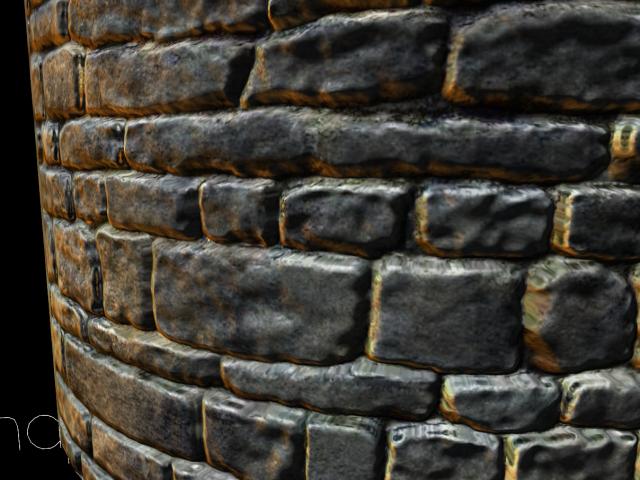Andy found this today. This is astounding.

http://www.opengl.org/discussion_boards/ubb/Forum3/HTML/011292.html
The basics of the technique are to displace the texture coordinates such that the texture occludes itself in accordance with a height map. If you look along the edges of the bumpy bits you can see the slight smearing effect (which doesn't look nasty as it follows the 'grain' of the overlying image).
The results are, I think you'll agree, very impressive. Total cost? 3 instructions in the pixel shader (if you already have a tangent space vector).
<edit: fixed link, thanks to those who pointed it out>

http://www.opengl.org/discussion_boards/ubb/Forum3/HTML/011292.html
The basics of the technique are to displace the texture coordinates such that the texture occludes itself in accordance with a height map. If you look along the edges of the bumpy bits you can see the slight smearing effect (which doesn't look nasty as it follows the 'grain' of the overlying image).
The results are, I think you'll agree, very impressive. Total cost? 3 instructions in the pixel shader (if you already have a tangent space vector).
<edit: fixed link, thanks to those who pointed it out>
